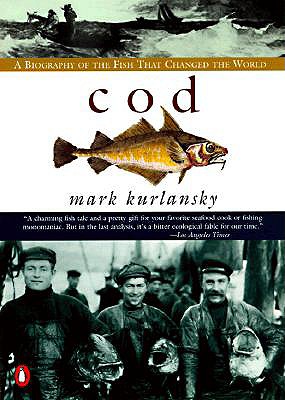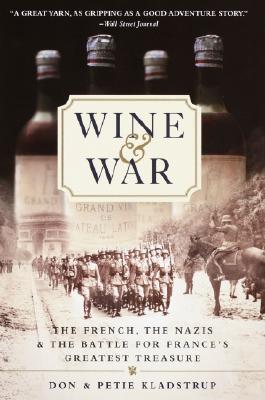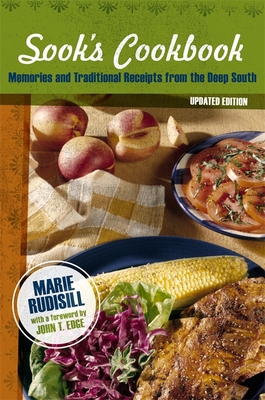 The change of seasons kindles my inner food & wine critic. Maybe it’s the stacks of red apples in their pre-pie à la mode mode; it may be thoughts of the upcoming Oktoberfest with sizzling wursts (topped with mustards and kraut); or visions of ripe, soon-to-be harvested grapes bound for oak casks to await a future incarnation.
The change of seasons kindles my inner food & wine critic. Maybe it’s the stacks of red apples in their pre-pie à la mode mode; it may be thoughts of the upcoming Oktoberfest with sizzling wursts (topped with mustards and kraut); or visions of ripe, soon-to-be harvested grapes bound for oak casks to await a future incarnation.
A good book about food or wine is its own kind of feast (only with fewer calories).
When I read the reviews for “Cod: A Biography of the Fish that Changed the World,” I was dubious. Question: Could an entire book about a fish be interesting? Answer: Yes.
The next time I sink my teeth in a piece of miso-glazed black cod, it will be with a new appreciation for the history, economics and pure physicality of commercial fishing; for the political, social and ecological implications; and for the rather amazing cod – a white fish (that does not taste “just like chicken”), but a food that like potatoes and rice, has managed to influence generations and over miles of land and sea.
I recently discovered “Cod’s” author,” Mark Kurlansky, a talented food writer who could describe a cereal box top and make me want to read more. Another of Kurlansky’s books, “Birdseye: The Adventures of a Curious Man” is full of “who knew” revelations, this time about a man who changed our modern world by discovering how to effectively freeze foods. (It’s easy to turn our noses up in the modern preference of fresh-versus-frozen, but imagine how limited our culinary options would be without the longevity and the convenience of frozen food.)
A consummate inventor, Birdseye was quirky, humble, brilliant and, indeed, one curious cat. He strikes me as the kind of guy that you’d love to join at a dinner party, especially if he was cooking one of his famous lobster dinners.
 “Wine & War” provides historical insight, exploring how inseparable French wine is to national culture. It is told through the lens of French winemaking families who mobilized in World War II to not only save their cellars and vineyards from the plundering Nazis, but fought to save a way of life and their heritage.
“Wine & War” provides historical insight, exploring how inseparable French wine is to national culture. It is told through the lens of French winemaking families who mobilized in World War II to not only save their cellars and vineyards from the plundering Nazis, but fought to save a way of life and their heritage.
They were cunning and creative; they built walls and became masters of misdirection. They hid, fibbed and “fobbed off” prized wines, plying the Germans with their worst while tricking them into believing that they guzzled the prize stock. It was a dangerous game and they risked their lives:
“The Gestapo marched through the house, searching every room, opening every armoire, pushing aside the clothes, tossing out linens, and looking under beds and behind doors….Downstairs, beneath the house, Maurice lit a candle and began to navigate the labyrinth of tunnels that made up his wine cellar. Centuries earlier, this huge underground maze, carved out of solid rock, held the wines of the Dukes of Burgundy and the Kings of France. Now Maurice hoped, it would provide a way for him to escape…Driven by the awful certainty that he would be killed if he were caught, Maurice searched frantically for a small wooden door that would lead him to safety.”
Raise a glass of your favorite nectar and cheer the Resistance as you read “Wine and War.”
And then there is “Sook’s Cookbook: Memories and Traditional Receipts From the Deep South,” a traditional cookbook and more. This gem represents six-degrees of literary separation: Sook Faulk was the aunt of author, Marie Rudisill, who in turn, was the infamous “Fruitcake Lady.” Rudisill, aka Fruitcake Lady, became well-known as the prudish-looking, not-at-all-prudish-talking, elder who offered hilarious commentary on anything from bawdy sex to well….anything. She was also Truman Capote’s aunt. And you may recall, Truman Capote was Harper Lee’s childhood friend and the real-life inspiration for Dill, Scout and Jem’s comrade in “To Kill a Mockingbird.”
The recipes (she wrote “receipts”) are true southern stock. They include the bourbon-laced fruitcake, made famous by Capote in “A Christmas Memory.” The book is a tribute, not only to Sook and her cooking, but how love baked into home-cooking nourishes the soul as well as the body.
 Accompanied by some wonderful illustrations, the narrative makes me wonder if something got baked into those recipes from the old South that endued not only natural culinary skills but also a genteel way of writing about the world.
Accompanied by some wonderful illustrations, the narrative makes me wonder if something got baked into those recipes from the old South that endued not only natural culinary skills but also a genteel way of writing about the world.
In the introduction Rudisill described, “The sign above the drugstore had been there a long time. The gold had worn off, but you could still read it: Monroe Drugs. The drugstore was a place to go and sit at the wire-legged tables with their matching chairs or up at the counter with the high stools and the cool white marble top. From the counter you could look into the streaked mirror while you drank your lemon or cherry Coke or ate your banana split. It was a place where kids stopped on their way home from school, toting croker sacks holding stiff cats, to read magazines from the stand or just to sit in the cool under the old wooden revolving fan that hung from the high ceiling.”
I grew up eating buttermilk biscuits, red eye gravy, and chicken and dumplings like the recipes in the book. They made me wistful and my mouth water at the same time. I think I’ll go find that pie à la mode now.
Bon Equinox, Bon Appetit
The exquisite serving board in the feature picture was made by the award-winning wood-designer, my good friend, Phil Gautreau. To visit his website and see his other designs, click here.